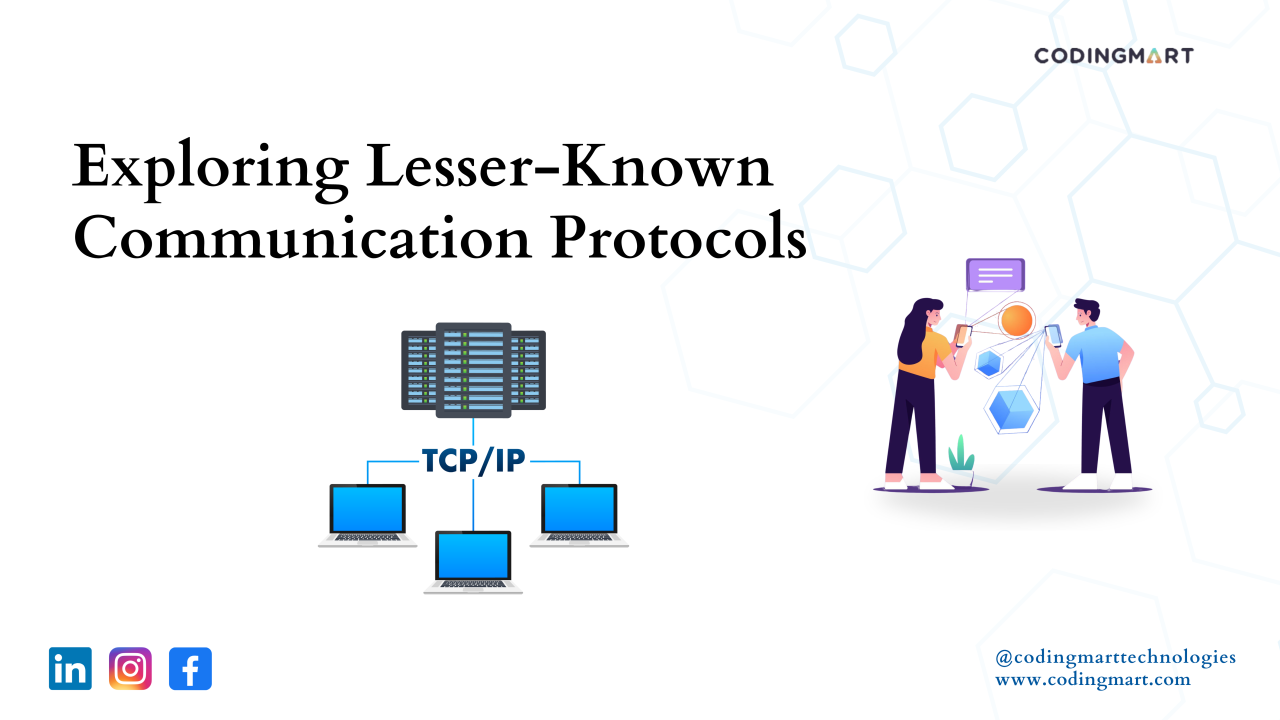
Exploring Lesser-Known Communication Protocols: Beyond the Usual Suspects
Codingmart Technologies
We help companies of all sizes from Startups to Unicorns to Enterprises; to pioneer the next generation technologies.
Hello Industry Professionals!
In the vast landscape of digital communication, we often hear about well-known protocols like HTTP, TCP/IP. But what about the lesser-known protocols that are also vital in various niches and use cases? Let’s dive into some of these unique communication protocols that might not always be in the spotlight but play crucial roles in specific environments.
1. CoAP (Constrained Application Protocol)
CoAP is designed for constrained devices and networks, particularly in the Internet of Things (IoT) space. It operates over UDP and is optimized for low-bandwidth, high-latency, or unreliable networks. CoAP is often compared to HTTP, but it's tailored for scenarios where resources are limited and efficient communication is essential.
Key Features:
2. AMQP (Advanced Message Queuing Protocol)
AMQP is a messaging protocol that enables applications to communicate asynchronously. It's used in scenarios requiring reliable message delivery, including financial services and enterprise systems. AMQP's design supports message routing, queuing, and transaction management.
Key Features:
3. DDS (Data Distribution Service)
DDS is a real-time data communication protocol designed for high-performance and scalable systems. It's particularly useful in applications where timely and reliable data exchange is critical, such as in autonomous vehicles or industrial automation.
Key Features:
4. UDS (Unified Diagnostic Services)
UDS is a diagnostic protocol used primarily in the automotive industry. It allows for communication between vehicle ECUs (Electronic Control Units) and diagnostic tools. UDS provides a standardized way to access and manage diagnostic information, including reading fault codes and performing ECU programming.
领英推荐
Key Features:
5. MQTT (Message Queuing Telemetry Transport)
MQTT is a lightweight messaging protocol designed for low-bandwidth, high-latency, or unreliable networks. It is widely used in IoT applications due to its efficient message delivery and support for various communication patterns.
Key Features:
6. gRPC (gRPC Remote Procedure Calls)
gRPC is a high-performance RPC framework developed by Google that uses HTTP/2 for transport and Protocol Buffers as the interface description language. It supports multiple programming languages and is used for building efficient, distributed systems.
Key Features:
7. RTP (Real-time Transport Protocol)
RTP is used for delivering audio and video over IP networks in real-time. It’s commonly used in streaming applications, video conferencing, and VoIP services. RTP typically works in conjunction with RTCP (Real-time Transport Control Protocol) to provide feedback on the quality of the data delivery.
Key Features:
While protocols like HTTP and TCP/IP are foundational to the web and general networking, these lesser-known protocols offer specialized solutions that are essential for specific use cases. Understanding these can help you choose the right tool for the job, especially in applications where efficiency, scalability, and real-time capabilities are crucial.